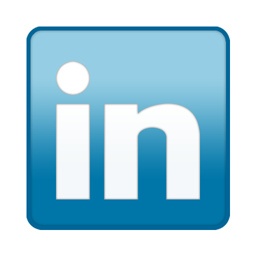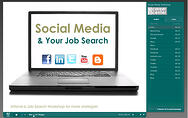
Where is that? Yup, you guessed it, social media is where recruiters report sourcing 25% of executive hires. And those are 2012 figures! I'm ready to say it straight out:
"If you're not spending a portion of your time every week on one of more of the following - LinkedIn, Twitter, blogs, youtube, Pinterest - you will be seriously handicapped in your job search both now and in the future." Here's what you'll want to do: Leverage the power of social media sites to build your thought leadership and make connections with professionals and recruiters in your space.
No longer is private reputation all that matters. What matters is that you are a player in your industry and function and visible as such. I don't say this to make anyone feel overwhelmed - we all have enough of that! But the executive resume is no longer your only reporting mechanism for your professional achievements and brand. The Internet is where recruiters will first make decisions, based on what they find, about whether to contact you.
LinkedIn is apt to be the first place recruiters will be encountering you. So pay AT LEAST as much attention to getting your LinkedIn profile 95-100% complete and keyword loaded as you do to developing a branded executive resume that can be visually scanned in 6 seconds.
So to fight the overwhelm, I'm going to list FIVE concrete, easy steps you can take to start reaping the benefits of social media for job search. But first, get the basics in place and establish a discipline for "keeping at it" in social media. You may actually find this fun after awhile and a valued addition to your usual professional activities.
The Basics: To start, I suggest you have profiles on LinkedIn, Twitter and ZoomInfo. Make sure they are marbled through with the right keywords and that they convey your branded value proposition. Then...
The Discipline: Set aside a half hour a day or 2-3 hours a week (maybe Sun. night?) when you can start to participate in online conversations going on in your industry and functional area. You are aiming to become known. You are also aiming to get to know the movers and shakers in your space and the recruiters who are monitoring where you hang out. Every interaction potentially creates valuable two-way networking opportunities.
The Fun:
- Start curating content relevant to your target market. Mine it from blogs of thought leaders and leading news sources and magazines. Select a RSS reader to aggregate your favorite blogs and enable you to quicky scan for content you would like to comment on and tweet out. There are lots of them. I use Google Reader and now Feedly. Try to do 2/day and space them out, using Buffer or one of the Twitter clients (TweetDeck, HootSuite). Feel free to tweet your own thoughts. One of my clients after implementing this advice says he gets all of his professional information now from Twitter.
- Set up your tweets so they automatically go to LinkedIn as well. When recruiters find your profile through keyword searches, they will see you are part of the conversation in your space. (Good!). Creates credibility and reassures them that you are a solid professional person to contact.
- Write a blog post once a week or comment on blogs you read that prompt a response in you. You will find that this activity will keep you in touch with emerging trends and news and enable you to filter it through your unique perspective, as a specialist in what you do.
- Select LinkedIn Groups you want to be part of. Choose ones where execs in your target company are active and recruiters participate. Comment, ask for opinions on something, link people to relevant content.
- Make heavy use of LinkedIn Updates and Mentions. More on these in another post. This prominent real estate - the Updates - on your LI profile enables you to give real-time information about an interesting talk you heard, infographic you saw, presentation you are giving, or people who have impacted you professionally in a positive way. If you set your Settings so that the updates go out to your contacts, they will start to know you as an interesting person and active in your field. Mentioning someone's name too is something LI is promoting now - the person mentioned will get notified and a potential connection can be made.
This is JUST ONE plan for getting going in social media. There are lots of other possible ways to engage. But, for executives, this one gives you a solid start. For more on how to create a killer LI profile, see other blog posts here. Good luck and let me know how it goes!


 One of the biggest concerns my executive clients have is how to use social media in their job search. They know that it's the new kid on the job search block, but they themselves have rarely gone beyond a bare bones LinkedIn profile (LIP). Facebook evokes shudders of horror, and Twitter is deemed trivial.
One of the biggest concerns my executive clients have is how to use social media in their job search. They know that it's the new kid on the job search block, but they themselves have rarely gone beyond a bare bones LinkedIn profile (LIP). Facebook evokes shudders of horror, and Twitter is deemed trivial.






